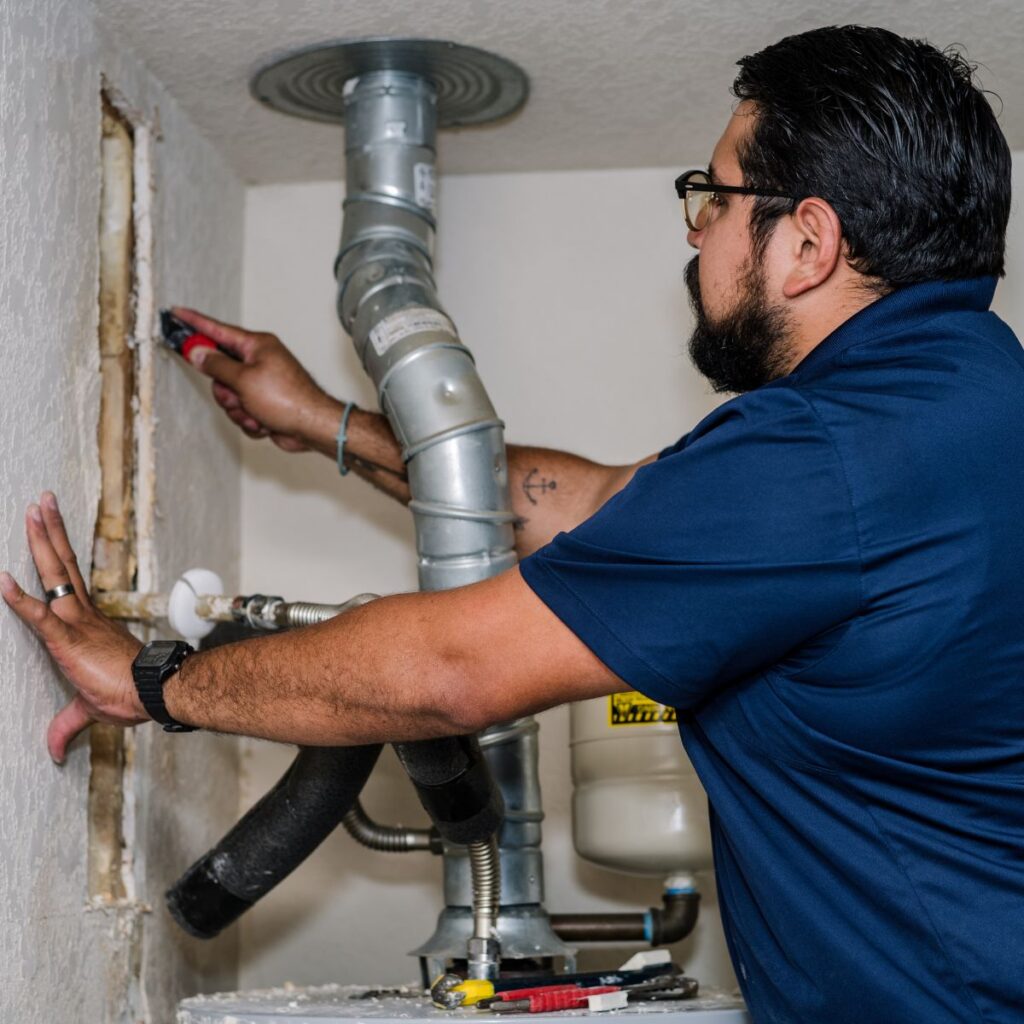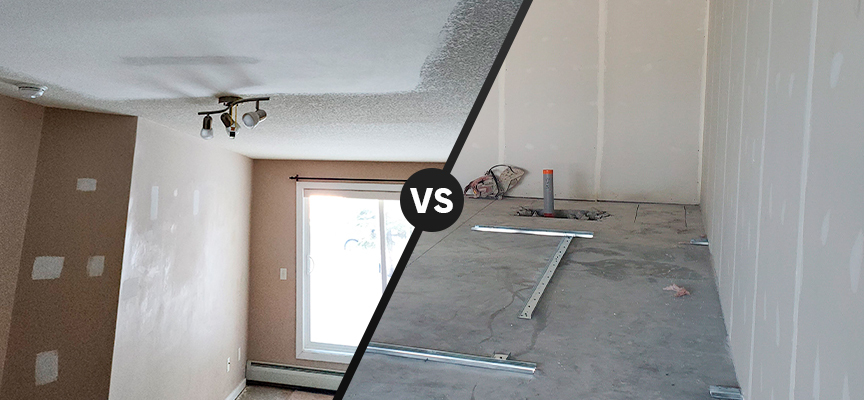Discover how Drywall Installation Ogden Utah can elevate professional painting services.
Wiki Article
Essential Tips for Effective Drywall Repair Service and Installation Strategies
Reliable drywall fixing and setup needs a cautious strategy. Understanding the kinds of drywall and having the right tools is important. Accurate measurements and proper techniques can significantly influence the result. Several overlook essential steps like taping and fining sand, which can make or break the last appearance. As jobs advance, common difficulties might occur that require attention. Checking out these ideas can bring about a much more polished and successful finish.Understanding Various Kinds Of Drywall
Comprehending the various sorts of drywall is essential for any kind of successful repair or installation task. Drywall, frequently referred to as plaster board, is available in several selections customized for particular applications. Standard drywall is the most extensively used type, perfect for basic indoor walls and ceilings. Moisture-resistant drywall, frequently environment-friendly in color, is designed for areas vulnerable to moisture, such as kitchens and washrooms. Fireproof drywall, normally colored pink or purple, is crafted to endure higher temperature levels and is commonly used in garages or near heating systems. Furthermore, soundproof drywall aids reduce noise transmission, making it ideal for multi-family homes or recording studios. Specialized drywall, like concrete board, is used in wet areas like showers or bathtub surrounds. Understanding these kinds assists in selecting the best product for each task, ensuring durability and efficiency out of commission or new setups.Essential Tools for Drywall Repair Work and Installment
Having the right tools is important for effective drywall repair and installation. A quality energy blade is crucial for cutting drywall sheets exactly. A drywall T-square helps ensure straight sides, while a taping knife is required for using joint substance smoothly over joints. Furthermore, a drywall saw enables for cutting out harmed sections or suitable drywall around components.For hanging drywall, a power drill with drywall screws is vital, as it enables protected and fast setup. A level is additionally essential to validate that the drywall is straight and appropriately aligned. A sanding block or post sander is necessary for raveling joint substance once it has actually dried out. A determining tape is vital for precise dimensions, stopping waste and making certain a proper fit. Furnished with these devices, people can take on drywall jobs properly, bring about professional-looking outcomes.
Step-by-Step Overview to Repairing Holes and Cracks
When attending to holes and fractures in drywall, having the right devices and products is important for a successful repair work. This guide details the essential products and offers a clear, step-by-step procedure to properly bring back the surface. Understanding these aspects will help ensure a seamless surface and durable results.Tools and Products Needed
A well-equipped toolkit is essential for efficient drywall repair and installation. Trick tools include an utility blade for reducing drywall, a tape step to ensure accurate sizing, and a drywall saw for bigger holes. A putty knife is crucial for applying joint compound smoothly, while a fining sand block or pole sander helps accomplish a smooth coating. For patching, a roll of fiberglass harmonize tape or paper tape is needed to reinforce joints. Additionally, a drill and screws are required for protecting new drywall pieces. Important materials include joint substance, primer, and paint to complete the fixing. Having these tools and products handy ensures a smoother, more reliable repair process, generating professional-looking results.Repair Service Process Actions
Fixing holes and fractures in drywall needs an organized strategy to assure a seamless finish. The location bordering the damages needs to be cleansed thoroughly to remove dirt and debris. Next off, for little fractures, a putty blade is utilized to apply a joint substance uniformly over the location. For bigger openings, a spot is required; the damaged section is removed, and a new piece of drywall is fitted in location, protected with screws. Once the patch remains in setting, joint compound is related to blend the sides. After drying, sanding the area smooth is important. Finally, the repaired surface area should be topped and repainted to match the bordering wall, ensuring a low-profile repair.Strategies for Putting Up Drywall Panels
Mounting drywall panels needs careful planning and exact execution to guarantee a expert and smooth finish. It is essential to gauge the wall area properly and cut the panels to fit, making certain that they straighten with the studs. Placing the panels flat is commonly suggested, as this can improve the architectural integrity and minimize the variety of joints.Using drywall screws, installers must protect the panels every 16 inches along the studs, ensuring a firm hold. It is important to stay clear of overdriving the screws, which can damage the paper surface. For edges and sides, using an utility knife enables tidy cuts and a tight fit.

Finishing Touches: Taping, Mudding, and Sanding
As soon as the drywall panels are firmly in position, the next crucial step entails the complements of taping, mudding, and sanding. Taping is essential for creating a seamless change between panels and concealing joints. A high quality drywall tape, either paper or fiberglass fit together, need to be used over the seams, guaranteeing it sticks appropriately to the mud read this post here that will be applied next.Mudding, or applying joint substance, adheres to the taping process. This compound fills spaces and smooths out the surface. An initial layer needs to be applied generously, feathering the sides to blend with the drywall. After the preliminary coat dries out, succeeding layers might be needed for a perfect surface.
Ultimately, fining sand is needed to achieve a smooth surface area. A fine-grit sandpaper needs to be utilized to delicately smooth out any imperfections. Care must be taken to avoid over-sanding, which can damage the drywall - Drywall Repair Ogden UT. Appropriately performed, these completing touches develop a specialist appearance all set for painting
Tips for Maintaining Your Drywall After Setup
Maintaining drywall after installment is important to protecting its appearance and structural stability. Routine cleaning is essential; dust and dust can gather, so gentle wiping with a moist cloth is suggested. Property owners need to likewise inspect for any kind of signs of dampness or mold and mildew, specifically in high-humidity areas like kitchen areas and washrooms. If any damage takes place, it is necessary to resolve it immediately to stop further concerns.Making use of furniture pads can assist prevent scratches or dents from hefty products. In addition, repainting the drywall with a premium, washable paint offers an additional layer of security and makes future cleaning easier. Stay clear of utilizing rough cleansers or devices, as these can damage the surface. Preserving go right here a stable interior environment with appropriate humidity degrees will certainly assist avoid splitting or deforming over time. By complying with these suggestions, one can guarantee that drywall continues to be in exceptional problem for many years to come.
Frequently Asked Questions
How Much Time Does Drywall Require To Completely Dry After Installment?

Can I Mount Drywall Over Existing Drywall?
Yes, drywall can be set up over existing drywall, but it is crucial to assure the underlying surface is safe and adequately prepared. This method can boost insulation and lower installation time, though it might add weight.What Is the very best Method to Soundproof Drywall?
The ideal means to soundproof drywall involves utilizing specialized soundproofing materials, such as durable networks, acoustic caulk, and sound-dampening drywall. These methods see effectively minimize audio transmission in between areas, boosting overall acoustic efficiency in living areas.How Do I Pick the Right Drywall Thickness?
To choose the right drywall thickness, think about the application and area. Standard domestic wall surfaces commonly make use of 1/2 inch, while ceilings or specialized locations may require 5/8 inch for added strength and soundproofing capabilities.Are There Eco-Friendly Drywall Options Available?
Yes, environmentally friendly drywall options are readily available. These consist of products made from recycled materials, gypsum boards with low unstable natural compounds (VOCs), and those making use of lasting manufacturing processes, providing environmentally-conscious choices for construction and renovation projects.Having the right devices is essential for efficient drywall repair work and installation. For hanging drywall, a power drill with drywall screws is essential, as it allows quick and safe and secure installment. Trick tools include an utility blade for cutting drywall, a tape procedure to ensure precise sizing, and a drywall saw for bigger openings. Yes, drywall can be installed over existing drywall, but it is essential to ensure the underlying surface area is protected and appropriately prepared. The finest means to soundproof drywall entails utilizing specialized soundproofing products, such as resistant networks, acoustic caulk, and sound-dampening drywall.
Report this wiki page